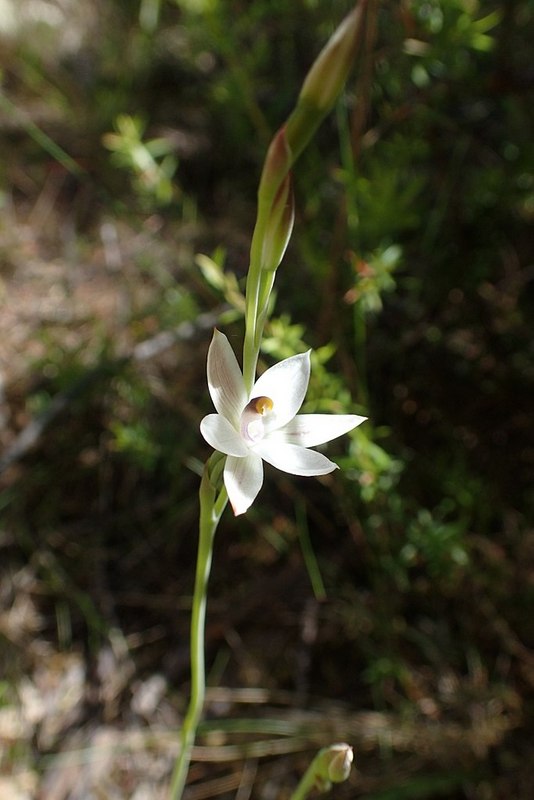Massey University student Hayden Jones and Te Papa Botany Curator Carlos Lehnebach are launching a citizen science project aimed at solving the identity crisis that surrounds one of our most common terrestrial orchids.
Maikuku – the white sun orchid (Thelymitra longifolia) – might be one of the most common species of orchid in Aotearoa New Zealand and is widespread throughout most of the country, often found in open sunny areas amongst scrub.
Plants produce a single leaf and between one and 20+ white flowers, which tend to only open on hot and still days in summer.

Over the last 250 years, botanists have noticed differences between populations of the white sun orchid found around the country. This orchid can show a wide range in the colour and shapes of the floral parts like the sepals and petals, and the column (a structure in the middle of the flower which contains the reproductive parts).
These differences have led to the question, is it all the same species? As a result of this variation, there have been many attempts to split up this species into multiple and several names have been created to reflect this variation. So far none of these attempts have lasted, with all of them ending up being lumped back under T. longifolia.
Left: Thelymitra longifolia. Photo: Wikipedia
As part of a research project funded by the Australia & Pacific Science Foundation (APSF 19047), Hayden and Carlos are interested in solving this taxonomic mystery by measuring and categorising the variability shown by this orchid. Previous attempts to do this have been hindered by issues with measuring dried specimens, which don’t retain their original forms, and a relatively small sample size.
“Our project aims to overcome these hurdles by making a call for help to all citizen scientists in Aotearoa New Zealand to help us measure key features of these plants. Your observations will help us to gain a true and representative view of what’s out there. It will also improve our chances of identifying any rare forms if they exist, helping to focus conservation efforts on populations that need it the most.”
If you would like to help solve this taxonomic mystery, register via the Thelymitra longifolia survey form or scan the QR code on the Te Papa blog page where there is lots more information about what to look for. The QR code will give you access to more information on the project, as well as resources to help you gather data.
